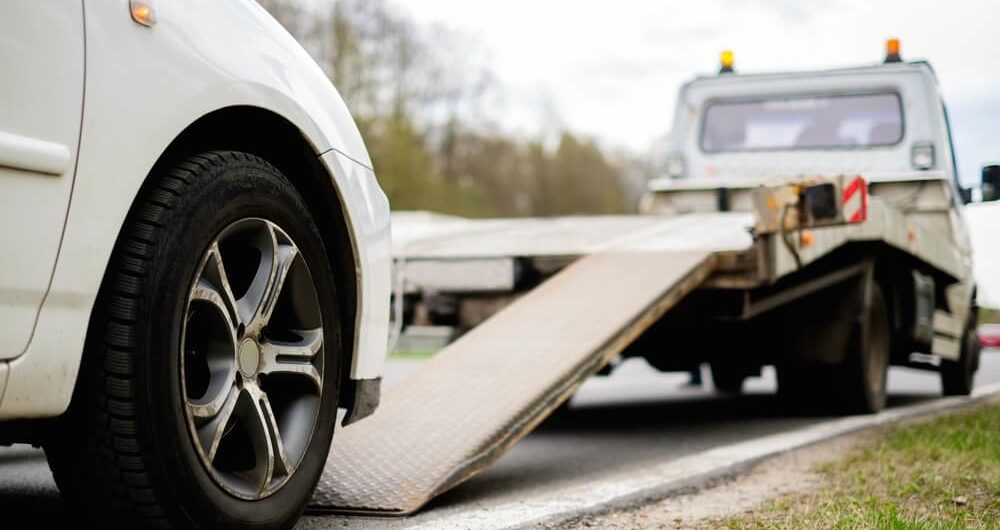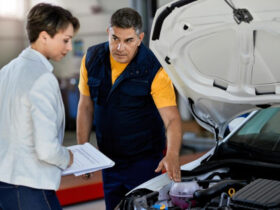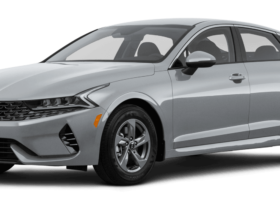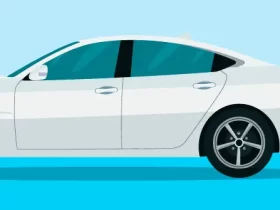When towing on a flexible hitch is not possible due to damage to the axle of the wheelset, the wheels themselves or brake failure, the first two types of towing are used. If the brakes are damaged, the car is towed on a rigid hitch, if steering is impossible – by partial loading.That is why we explain in this blog our best towing tips.
The nylon tow rope won’t hit your wallet in the least, and there’s no better option for a flex hitch. Nylon is an elastic and durable material, it does not take up much space in the trunk of a car. In no case is it advisable to use a rope or rope as a towing rope.
The material for the carabiners must be exclusively forged steel. It is heavier and you can easily distinguish a forged steel hook and shackle from a light alloy cast. Choose a hook with a spring-loaded pawl for better fixation of the cable.
According to the rules of the road, with a flexible hitch, the distance between the lead and follower drivers should be in the range from 4 to 6 meters. With a rigid hitch, this distance should not exceed4 meters.
With a flexible hitch on the cable, special flags or shields of 20×20 cm in size with red and white stripes in height applied to them with retroreflective paint must be installed every meter 5 cm…
For a high-quality organization of the process, drivers should agree on an average speed of movement (recommended 30 km / h – 50 km / h) and on conditional signals for possible braking, stopping and maneuvers.
It is advisable to use a car with automatic transmission as a leader only in extreme cases and with a rigid coupling, while adhering to the automatic transmission positions “2” and “L”.
Preparing for towing
Before starting towing, choose its method, and also figure out which of the participants in the process will go in which car. Regarding the method, everything is simple – most everyday situations require towing on a flexible hitch, that is, using a conventional cable. Rigid hitching or partial loading are used when a truck needs to be towed or in the event of a brake system or steering malfunction of the towed vehicle. It is important that the towing is prohibited by the rules traffic in gololo etc….
If there is a less experienced driver in the town than in the towed car, then it makes sense for such drivers to change if possible – so that the more experienced driver pulls the less experienced, because the towing is more difficult to control. Be sure to agree in detail on the route of movement. Also, before the start, agree on what the conditioned signals mean to each other – blinking with a high beam, a sound signal, hand gestures.
Contrary to the sometimes encountered opinion, the driver of the towed car remains the driver, and does not become the passenger of the car riding “on a string”. Therefore, all the same restrictions apply to it as to ordinary drivers. For example, have a driver’s license with you or not be intoxicated. Accordingly, you must also have documents for the car and documents confirming the right to drive it.
Prepare both vehicles before towing.
The towing car should not differ much in weight from the towed one and have a worn clutch unit, as well as a completely serviceable cooling system, since the engine heats up more than usual during towing. Screw the towing eyelet into the special thread in or under the rear bumper, or find it under the underbody at the rear of the machine.
Hook a cable over it and if you have a choice, then do it in such a way that it is located “obliquely” in relation to the towed vehicle. That is, for example, it was attached on the left side of the tug and at the same time on the right side of the towed one.
Attach the cable to the towed machine as recommended above.
A bright fabric must be tied to the cable every meter so that it is noticeable. Start the engine and warm up the interior with the stove to thaw the windows. If the engine does not start, clean the windows by hand to have sufficient visibility in all directions and slightly open the window so that the windows do not “sweat” from the inside.
If the engine does not start, be sure to turn the ignition key to the “battery” (first “click”) or “ignition on” (second “click”) position to unlock the steering column – otherwise, the steering wheel will lock in the turned state at the first turn. Before driving, turn on the hazard warning lights or attach a warning triangle to the rear of the body.
Here are the secrets to towing a car:
- the cable should be fastened at a slight angle to soften jerks;
- acceleration should take place gently until the cable is fully tensioned, in which condition the cable should be supported;
- it is advisable for the driven driver to hold the car in a position that will provide him with the best view;
- all maneuvers, braking and stopping must be smooth;
- All-wheel drive vehicles can only be towed with the axle raised.
Due to the possibility of towing the car, the driver should pay particular attention to the traffic rules for such cases.










